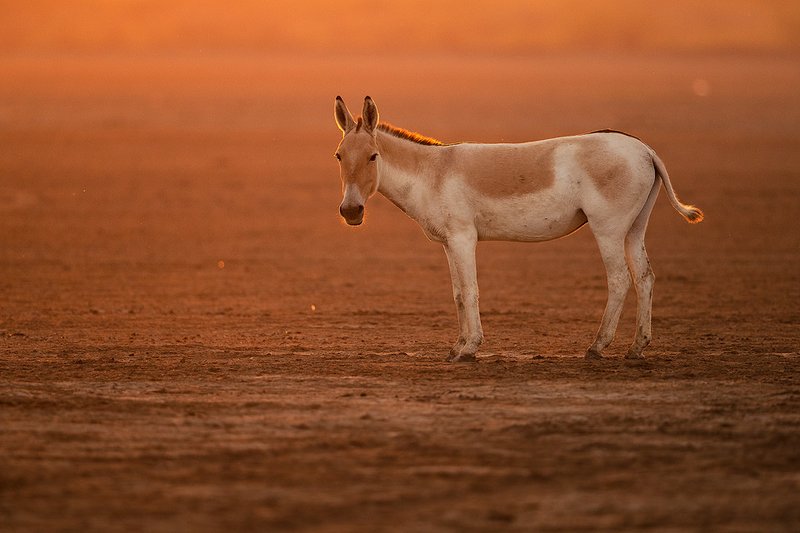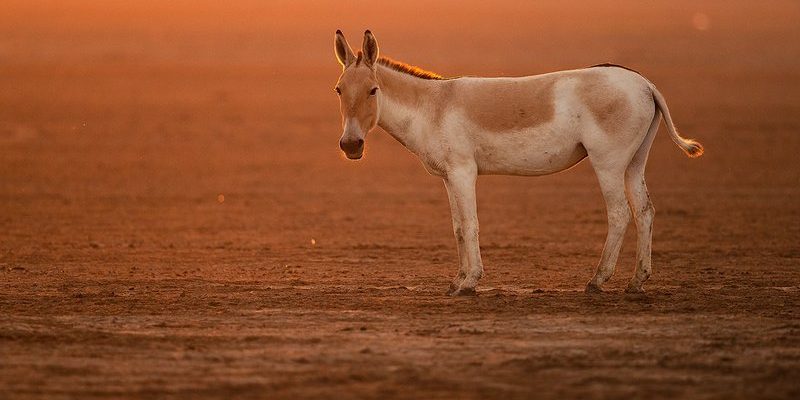
The Onager, often referred to as the Asiatic wild ass, is a fascinating creature that embodies the rugged spirit of its native habitats. Imagine a blend of strength, grace, and an adventurous spirit that roams the vast and arid landscapes of Asia. While their cousin, the domestic donkey, is well known, the Onager remains a lesser-known gem with incredible adaptations that help it survive in harsh environments. These unique animals are not just interesting due to their wild nature, but they also play a vital role in their ecosystems.
What sets the Onager apart from other equines like horses and donkeys? For starters, they are built for endurance rather than speed, making them uniquely suited for life in the wild. Their long legs and strong hooves allow them to traverse rocky terrains and sandy dunes with ease. So, if you’re curious about this magnificent animal, stick around as we dive deeper into its world. You’ll discover everything from their physical characteristics to their social behavior and conservation status.
Physical Characteristics of the Onager
The Onager is a striking animal, easily identifiable by its distinct physical features. With an average height of about 4.5 to 5.5 feet (1.4 to 1.7 meters) at the shoulder, they are slightly smaller than horses. Their coat varies in color from a light sandy hue to a darker brown, often with a lighter underbelly. One of the most notable features is their characteristic dark stripe along their back, which is a helpful identification mark in the wild.
Another unique aspect of the Onager is its large, expressive eyes, which are perfectly adapted for seeing in the harsh light of their environment. These eyes allow them to spot predators from a distance, ensuring they can act swiftly when danger approaches. Their ears are long and sensitive, enabling them to detect subtle sounds—a trait that is crucial for their survival.
Onagers also have strong, muscular bodies that give them both strength and agility. Unlike other equines with broad snouts, Onagers possess a narrower, more graceful face, which complements their sleek physique. This design helps them in their natural habitat, where speed and endurance can mean the difference between life and death.
| Characteristic | Description |
| Height | 4.5 to 5.5 feet (1.4 to 1.7 meters) |
| Weight | Between 600 to 800 pounds (270 to 360 kg) |
| Coat Color | Sandy to dark brown with a lighter underbelly |
| Habitat | Steppes, deserts, and arid grasslands of Asia |
| Diet | Herbivorous; primarily grasses and shrubs |
| Lifespan | 20 to 30 years in the wild |
Habitat and Distribution
Onagers inhabit some of the most challenging environments on the planet, primarily steppes and deserts of Central and Western Asia. Their range historically included regions like Iran, Iraq, and parts of the Arabian Peninsula, but today they are concentrated in protected areas due to habitat loss and poaching.
These animals are well-adapted to survive in such harsh conditions. They can go for long periods without water, often relying on the moisture found in their food. Their ability to tolerate extreme temperatures—ranging from scorching heat to biting cold—makes them incredibly resilient. In fact, onagers can often be seen foraging during the cooler hours of dawn and dusk to avoid the heat of midday.
Given their preference for open and arid landscapes, Onagers are highly social creatures. They typically live in small herds that can include both males and females, but during breeding seasons, males may become more solitary, focusing on competing for mating opportunities. This social structure helps them communicate and work together to find food and evade predators.
Diet and Feeding Habits
The Onager is primarily herbivorous, and its diet consists mainly of grasses, shrubs, and other vegetation found in its natural habitat. Their grazing habits are particularly interesting; they are known to be selective feeders, which means they often choose the most nutritious parts of plants to consume. This selectivity helps them maintain their energy levels in environments where food can be scarce.
One fascinating aspect of their feeding habits is their ability to digest tough, fibrous plant material. Onagers possess specialized teeth designed to grind down coarse grasses, allowing them to extract the maximum amount of nutrients from their food. Additionally, their digestive systems are adapted to break down plant fibers efficiently, a crucial adaptation in the arid steppe where food quality can vary significantly.
Interestingly, these animals have developed a unique behavior of migrating in search of better grazing grounds. During the dry season, when vegetation is limited, Onagers will move to areas with more abundant food. This migration not only supports their health but also helps maintain the ecological balance in their habitats by preventing overgrazing in any one area.
Social Behavior and Reproduction
Onagers exhibit fascinating social structures that enhance their chances of survival in the wild. They typically live in small, loose-knit herds, which can include anywhere from 2 to 15 individuals. These groups often consist of females and their young, while adult males may either stay within the herd or be more solitary during certain times of the year.
Social interactions among Onagers are crucial for establishing bonds and hierarchies within the herd. Grooming and playful behaviors are common, helping to reinforce social connections and reduce stress. When it comes to defending against predators, these close-knit groups can work together effectively, using their collective awareness and speed to evade threats.
When it comes to reproduction, the Onager’s mating season typically occurs during spring. After a gestation period of around 12 months, females give birth to a single foal, which is usually able to stand and run shortly after birth—an essential survival trait in the wild. Mothers are protective of their young and will fiercely defend them against potential dangers. As the foal grows, it gradually learns important skills from its mother and other herd members, ensuring that it becomes a competent survivor in its environment.
Conservation Status and Threats
Sadly, the Onager is considered to be vulnerable due to a variety of threats that have dramatically reduced its population over the years. Habitat loss is a significant issue, largely due to human encroachment, agriculture, and urban development. As these areas shrink, so do the resources available for Onagers to thrive. Not only do they lose grazing grounds, but they also lose essential water sources.
Additionally, poaching poses a serious risk. Onagers are hunted for their meat, hide, and sometimes even for sport. Poaching impacts their population and hinders any conservation efforts that aim to protect them. In recent years, initiatives have been introduced to monitor populations and enhance protection in designated reserves, but the success of these efforts largely depends on local community support and enforcement of anti-poaching laws.
Captive breeding programs have been established in certain areas to help bolster wild populations. These programs aim to raise awareness about the Onager’s plight while also educating communities on the importance of wildlife conservation. The goal is to reintroduce healthy, genetically diverse individuals back into the wild, thus increasing the chances of sustainable populations in the future.
FAQ
What is an Onager’s lifespan in the wild?
In the wild, Onagers typically live around 20 to 30 years, depending on their environment and the pressures they face. Factors such as food availability, predation, and human activity can significantly impact their lifespan. In protected settings, where they are shielded from threats, they may live even longer.
How fast can an Onager run?
Onagers are known for their speed and agility and can reach speeds of up to 40 miles per hour (64 kilometers per hour). This remarkable speed is essential for evading predators in their natural habitats. Their endurance allows them to maintain a good pace over long distances, which is a great advantage in open landscapes.
Are Onagers social animals?
Yes, Onagers are social creatures that tend to live in small herds. These groups provide safety in numbers and help them stay alert against potential threats. Social interactions within the herd include grooming and playing, which strengthen bonds and enhance their overall wellbeing.
What do Onagers eat?
Onagers are herbivores, primarily grazing on a variety of grasses and shrubs available in their steppe and desert habitats. They are selective feeders, often choosing the most nutritious parts of the plants. Their ability to digest fibrous plant material is crucial for their survival in arid environments.
Why are Onagers endangered?
The Onager is classified as vulnerable primarily due to habitat loss from human development, agriculture, and poaching. As their natural habitats shrink and become fragmented, Onagers face increased challenges to their survival. Conservation efforts are underway to protect their populations and habitats.
Where can you find Onagers in the wild?
Historically, Onagers roamed throughout various parts of Asia, including Iran and Iraq. Today, they are mostly found in protected areas within these regions, as well as in conservation reserves. Efforts are ongoing to stabilize and restore their populations in areas where they have become scarce.
Can Onagers be domesticated?
While Onagers are related to domestic donkeys, they are not typically domesticated animals. Their wild nature and specific habitat requirements make them unsuitable for life as traditional pets or working animals. However, they have been kept in zoos and wildlife reserves for conservation purposes.
What adaptations allow Onagers to survive in harsh climates?
Onagers have several adaptations that enable them to thrive in extreme environments. Their ability to go long periods without water, resistance to temperature extremes, and specialized digestive systems for processing tough vegetation are key features that help them survive in arid habitats.
How do Onagers communicate?
Communication among Onagers includes vocalizations, body language, and subtle social cues. They may use sounds like braying, snorting, or whinnying to convey messages to one another. Additionally, physical gestures, such as ear positions and tail movements, play a significant role in their social interactions.
What is the role of Onagers in their ecosystem?
Onagers play a crucial role in their ecosystems by acting as grazers that help maintain plant community dynamics. By feeding on various grasses and shrubs, they prevent any one species from dominating the landscape, promoting biodiversity. Their movements and grazing habits also contribute to soil health and nutrient cycling.
Are there any conservation programs for Onagers?
Yes, several conservation initiatives focus on protecting Onagers and their habitats. These programs include habitat restoration, anti-poaching efforts, and captive breeding to ensure genetically diverse populations are reintroduced into the wild. Community engagement is also a critical part of these efforts, fostering local support for wildlife conservation.

